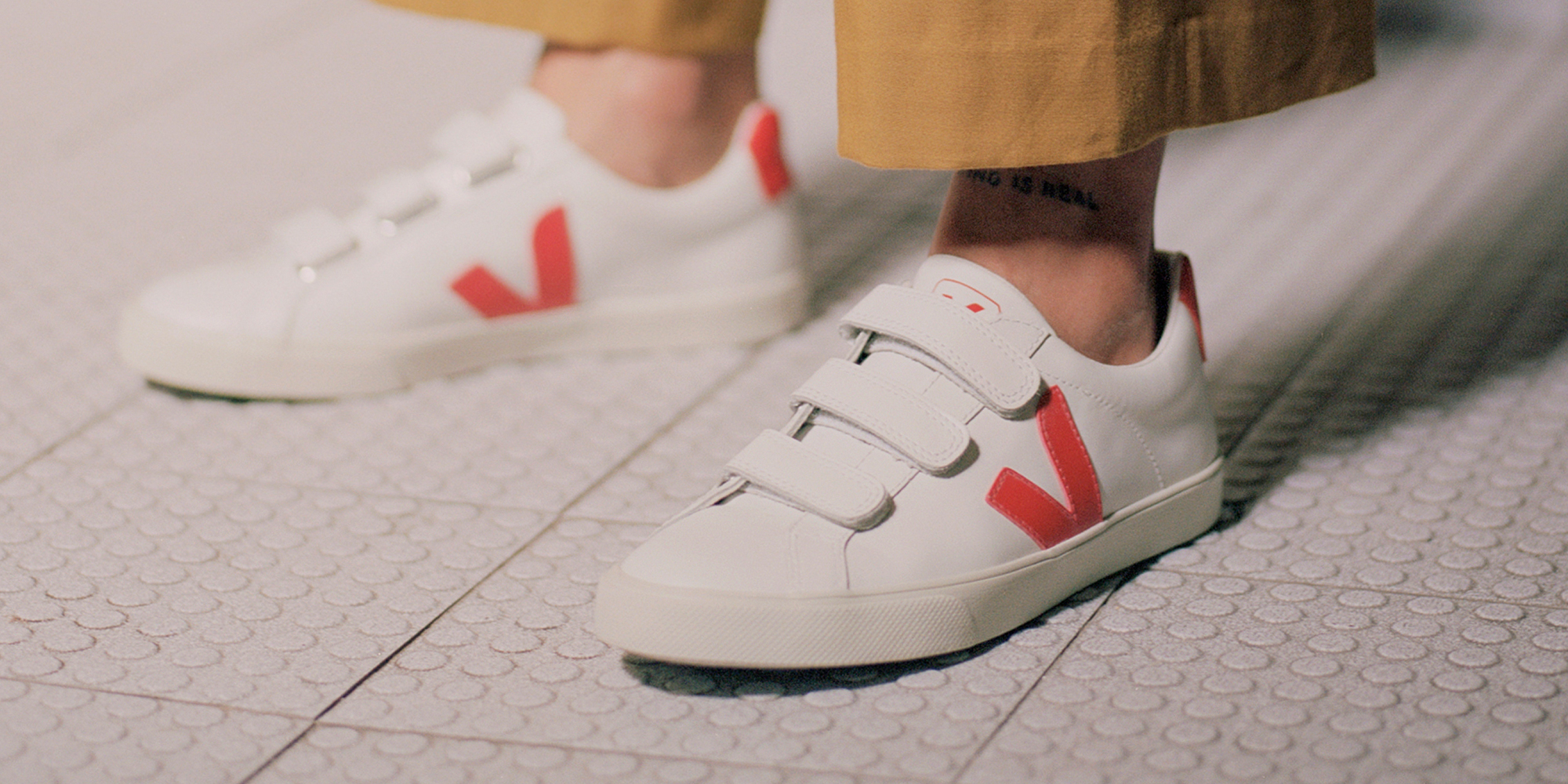Sustainability and the metaverse: friend or foe? We investigate how it works, the potential benefits and pitfalls, and why—despite the hype—it isn’t a silver bullet for the current fashion crises.
A brief history of digital fashion
Last month, the fashion world witnessed the first-ever Metaverse Fashion Week. Once again, the conversation around “web3” and “metaverse fashion” has been thrust into the spotlight. But, of course, digital fashion is nothing new, as our Sims days can attest.
If you’re not the gaming type, maybe it was that ephemeral moment when Alicia Silverstone in Clueless dressed her digital self and then magically appeared in that infamous yellow, two-piece plaid set that every college girl recreates on Halloween. Whatever your first introduction, digital fashion has been around since the beginning of the internet, but until recently, wasn’t as widely publicised.
In the past few years, augmented and virtual reality opened up new conversations around digital fashion. COVID-19 pushed it further into mainstream lexicon.
When the pandemic hit and fashion was forced to take a step back, virtual fashion proponents emphasised that there is more to the technology than flashy marketing ploys and CGI fashion shows. In an almost “sustainable” dreamworld, it seemed to offer clothes without production, pollution, waste, and fashion shows without international flights. Soon, it was all over the media with luxury houses like Dolce & Gabbana unveiling digital collections attached to NFTs (one-of-a-kind digital files), and brands like Adidas announcing that they will enter the metaverse by selling NFTs.
So, what does it all mean? Is the metaverse and digital fashion better for people, the planet, and animals? Is this the solution we’ve all been waiting for?
Let’s dig into digital fashion and see what’s real.
What is the metaverse?
First things first. The term “metaverse” refers to a virtual space created within the internet using 3D technologies. In the metaverse, the user is immersed in a virtual space where they can do everything they do in real life, such as visiting exciting locations, meeting people, buying works of art, or selling real estate.
This concept is directly related to such technologies as blockchain, augmented and mixed reality, “non-fungible” tokens (NFTs), and many other tech advances of recent years. While NFTs can seem confusing, they’re really just a way to own digital assets, like a MetaBirkin, in a decentralised, non-fungible way.
In simple terms, the metaverse provides an ecosystem or platform for creating, owning, and monetising digital assets. It’s all built on blockchain technology. The metaverse relies on it not only as a ledger for digital goods, but also to be maintained and creatively expanded without a central organisation controlling everything.
How does it relate to fashion?
As fashion immerses itself in the metaverse, it takes two primary forms: the first is a combination of physical and digital, where clothing can be worn using augmented or virtual realities. The second is fully digital, where items are sold directly to an avatar or as NFTs.
Fashion brands clearly see the metaverse as a new way to engage tech-savvy and young consumers. For example, in 2021, the Gucci Garden premeried as a pop-up on the online game platform Roblox to sell the brand’s designs, featuring handbags and accessories that could be valued in real currency. Similarly, Balenciaga went fully digital when it launched its collection of clothes in Fortnite as “skins”, or outfits for game characters. You could purchase them using V-Bucks, the Fortnite world currency, which is purchased with real money. Then, late last year, Nike made waves by launching Nikeland—its own metaverse store that allows users to try on virtual products, in addition to playing to the strengths of Roblox as a platform with games such as dodgeball.
Wanting to be a digital leader, Nike has been among the first big brands to push the idea of virtual goods having value on parity with their real-world counterparts, in line with Burberry and some luxury manufacturers. In their eyes, it adds some utility to the brand extension rather than just being a collectible for the sake of it, which is necessary to prevent NFTs simply becoming a fad.
The metaverse and sustainability
The fashion industry is hugely wasteful. In 2020, management consulting company McKinsey predicted that, if nothing changes, by 2030 fashion would be responsible for 2.7 billion metric tons of carbon emissions a year. It is of paramount importance that the industry cuts down how much it produces and pollutes.
How does the metaverse fit in? Proponents of digital fashion would have you believe it could mitigate some of the industry’s impacts. Theoretically, if the metaverse caught on in the mainstream, designers would be able to significantly cut back on production, reproduction, and the waste created in the process by having fully virtual showrooms, launches, and events. While cutting back on resources, you might also hear metaverse boosters talk about the infinite creativity and exploration that the metaverse allows.
While digital designs are not yet big earners compared to physical clothing, and may never be, they have potential to change the fashion industry’s footprint on the planet. For example, physical garments can be authenticated as NFTs and have a digital twin. This means that new fashion creators have the same chance of building a metaverse-native brand as a heritage label, without ever needing to have a physical presence. To create digital fashion, the only tools required are a computer and the right form of design software like Clo3D or MarvelousDesigner.
To put it another way, people could enjoy a virtual fashion week or a version of the garment that they would like to buy to post on social media, without the waste associated with it. It’s an interesting vision for clothes as entertainment—one fraught with opportunities, but also chances to hijack the system.
While many have highlighted these opportunities, few have addressed the physical production processes. Instead, they’ve discussed the metaverse purely from a marketing and product perspective—wanting to capitalise on the value proposition without taking the time to address current overconsumption, unethical marketing practices like greenwashing, and other ethical concerns.
For example, earlier this year, Nike reported that its revenues for the third quarter ending on February 28 totaled $10.9 billion, up 5% on a year-over-year basis. Nike’s digital sales in the latest quarter rose 19% from the prior year, fueled by 33% growth in North America. CEO John Donahoe told analysts on the earnings call that Nike will continue to grow its presence in the metaverse, through its tie-up with Roblox as well as its acquisition of the virtual sneaker marker RTFKT.
The ethical conundrums metaverse fashion raises
All of this raises some ethical concerns. As many “foes” can attest, physical clothing will always be relevant as long as we walk this Earth. So, until our physical consumption and obsession with trend wanes, the metaverse will be just as “unsustainable” as other marketing or social channels for Nike or Adidas to promote their newest products.
In line with this thinking, Eco-Age, a consulting and creative agency specialising in fashion sustainability, has recently launched the Eco-Verse Division. This new division exists to advise clients on how to enter the NFT and metaverse world “ethically,” ensuring they respect both environmental and social standards in the process.
While this is a step in the right direction, unfortunately blockchain technology is extraordinarily energy intensive. NFTs are often recorded on Ethereum, a blockchain-based platform with its own cryptocurrency that uses a mechanism called Proof-of-Work to document transactions. Unlike Bitcoin, which is another cryptocurrency, Ethereum uses a ledger technology that companies can use to build new programs, making Ethereum far more robust. If Bitcoin was version 1.0, Ethereum is 2.0, allowing for the building of decentralised applications to be built on top of it.
As the media has noted, crypto has been under fire recently for its energy consumption. According to the Cambridge Centre for Alternative Finance (CCAF), Bitcoin currently consumes around 110 Terawatt Hours per year—0.55% of global electricity production, or roughly equivalent to the annual energy draw of small countries like Malaysia or Sweden.
While it is widely accepted that it is an energy intensive process, the relative carbon emissions associated with this energy production are still not entirely understood. There is still much debate about the actual energy mix and the mining process, leading to often inaccurate portraits.
Looking to the future
Where does this leave us—is the metaverse friend or foe to people, the planet, and animals? So far, it’s something in between.
As Auret Van Heerden from Eco-Age says: “The metaverse is already being built, by us, the users of digital media. It is our data and behaviour that enables the metaverse. In order for it to be beneficial, we urgently need to engage in order to set ethical standards, protect human rights and environmental standards, and restore agency to the users.”
This means having not only a right to know how it’s being built, but being involved in the process so that it can be environmentally and socially responsible from the beginning. This includes having a democratic ecosystem and ownership, acknowledgment of current unsustainable production in the real world, and marketing standards for brands and digital creators.
Without a solid foundation and standard setting, the metaverse will just be another channel for overconsumption and buying frenzy with the only true winners being those at the top.



















